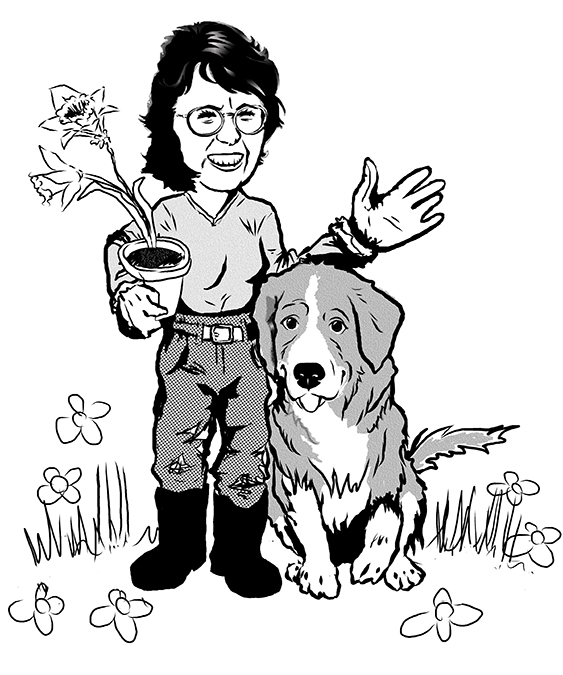by Leslie Cox; Tuesday, July 23, 2013
Much is being talked about in regards to the future of our food supply. Many have concerns about seed availability, genetically modified organisms (GMOs), cost of trucking – the list goes on.
But what are the impacts of growing your own food, even if you garden organically, in relation to our changing climate? Weather patterns are decidedly different from what we remember from even 10-15 years ago.
One of the biggest global warming factors is the increase in atmospheric carbon dioxide (CO2) levels. Currently, they are at 398.58 ppm (parts per million) as of June 2013. (That figure is up by over 20 ppm from November 2008 when I first began researching this subject.) Scientists forecast the levels will reach 560 ppm or higher by as early as 2050.
In the garden scene, what does this mean?
Well, it has been proven increased carbon dioxide levels have actually been beneficial in the garden, especially in the vegetable patch. Researchers have discovered fertilizing with gaseous carbon dioxide promotes excellent growth spurts in plants. Both laboratory and field studies showed doubling the CO2 levels produced, on average, an increased yield of over 40 percent. Think about how this can increase yields with bigger tomatoes, potatoes, carrots, etc! Not only will farmers be able to realize bigger crops, but we will also be able to feed the hungry utilizing less land and less water.
 But will the hungry really benefit from this new food source? Sadly, no. There is other research currently underway indicating that while higher CO2 levels increase crop yield, there is also a decrease in the nutritional value in the plants. Studies are showing nitrogen levels in plant tissue decline as the CO2 from fossil-fuel burning is built up. Nitrogen is an essential nutrient in our diet for its contribution towards making protein.
But will the hungry really benefit from this new food source? Sadly, no. There is other research currently underway indicating that while higher CO2 levels increase crop yield, there is also a decrease in the nutritional value in the plants. Studies are showing nitrogen levels in plant tissue decline as the CO2 from fossil-fuel burning is built up. Nitrogen is an essential nutrient in our diet for its contribution towards making protein.
And nitrogen is not the only declining element. Phosphorous, iron, magnesium and zinc, to name just a few essential nutrients, are also declining as the CO2 levels increase. One published study on rice reports four out of five elements actually decreased when the crop is grown in a CO2-enriched environment. The published findings were: nitrogen dropped 14 %, iron 17 %, zinc 28 % and phosphorous as much as five percent. Calcium was the only element to have an increased level of 32 percent.
The same holds true for wheat. A recent study by Chinese researchers discovered a decrease in nitrogen concentrations of 15 %, phosphorous 36 %, zinc 32 % and potassium 23 % even though elevated CO2 levels significantly increased crop yield.
What does all this mean to the starving nations of the world? Well, there will definitely be more food to feed the hungry, but notably lower nutrient levels will result in even higher malnutrition.
A deficiency in iron can cause cognitive impairment as well as increase the number of stillbirths. A deficiency in iodine can cause brain damage. Chromium is believed to be an essential micro-nutrient for regulating blood-sugar levels and selenium, another micro-nutrient, is an important antioxidant in our diet.
But humans will not be the only sufferers of higher carbon dioxide levels. Animals will be impacted and insects will not be immune either.
A study of cabbage white butterfly larvae that were fed a diet of cabbage leaves grown in an environment with double the current CO2 levels has revealed their development was slowed by roughly 10% and the adults were smaller. While vegetable growers may not be alarmed at these new problems for the cabbage white butterfly, something even scarier has come to light.
 Another study revealed aphids were able to reproduce 15-20 times faster in higher CO2 environments. Take into account that at present CO2 levels female aphids produce up to 10 live nymphs per day during a growing season, these new numbers are staggering. From 10 nymphs per day to 150 or 200 per day…per female aphid!
Another study revealed aphids were able to reproduce 15-20 times faster in higher CO2 environments. Take into account that at present CO2 levels female aphids produce up to 10 live nymphs per day during a growing season, these new numbers are staggering. From 10 nymphs per day to 150 or 200 per day…per female aphid!
Scientists are only beginning to speculate on what the outcome increased levels of carbon dioxide will have on all of our global ecosystems.
It is high time all of us gave some serious thought about how big an impact our carbon footprint is having on the environment.
